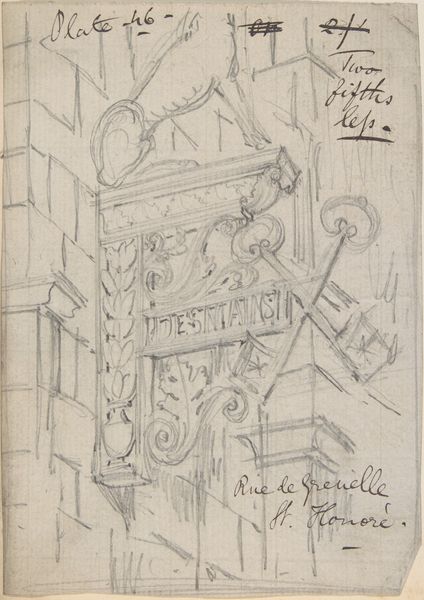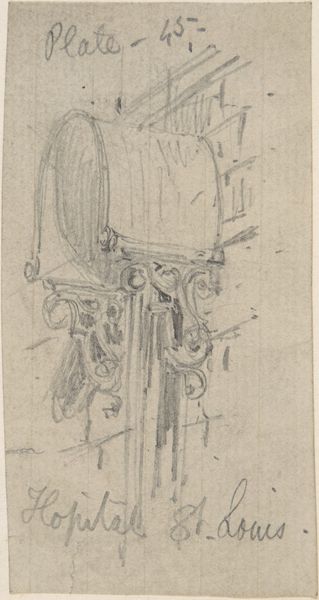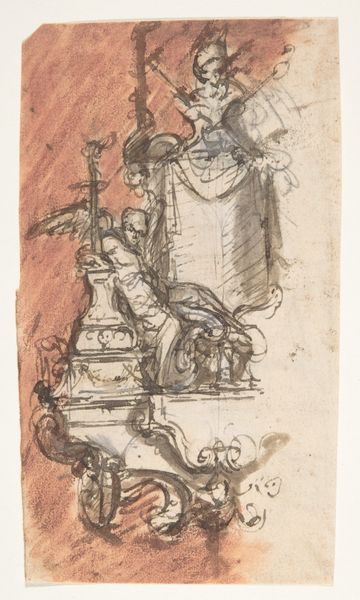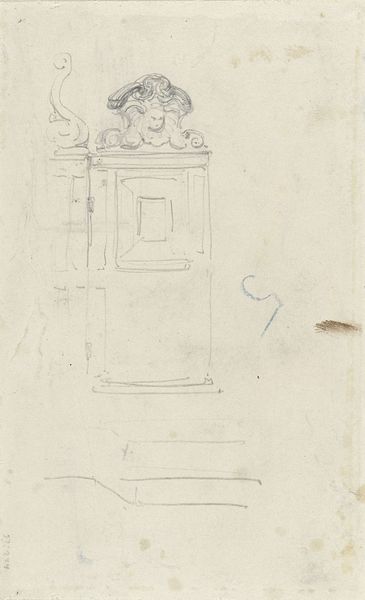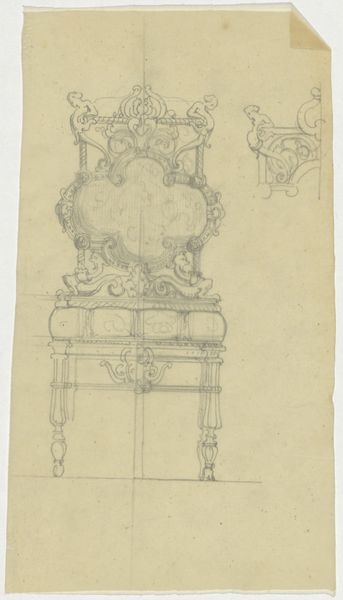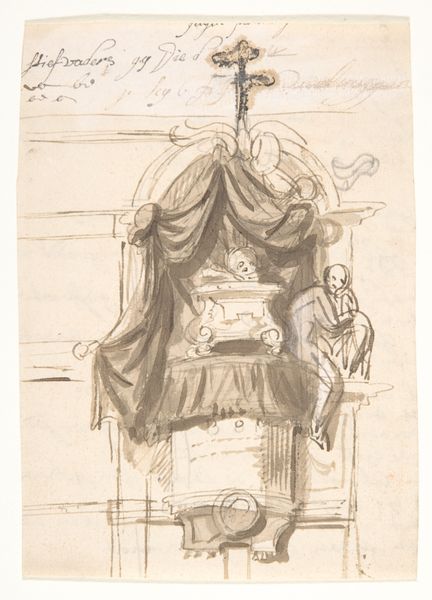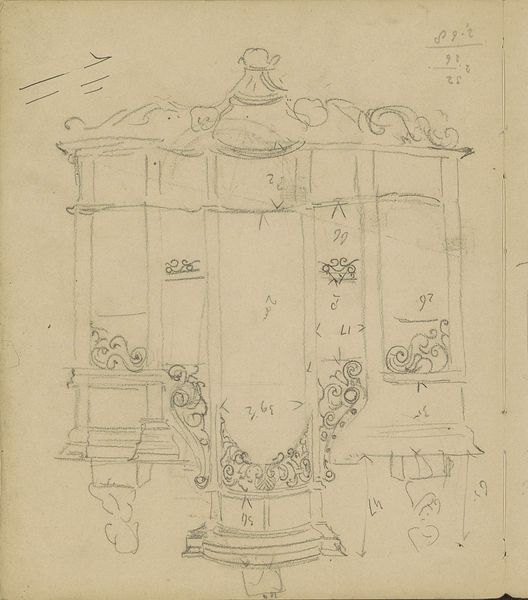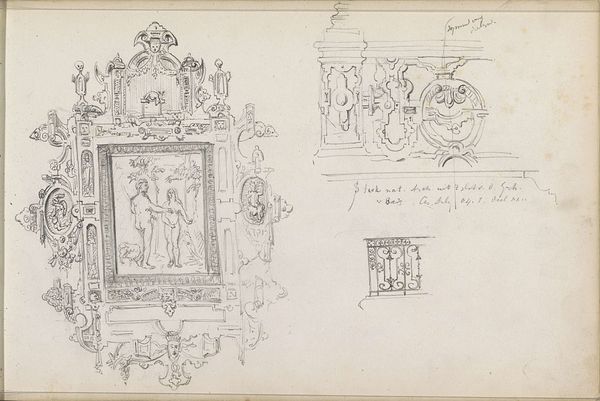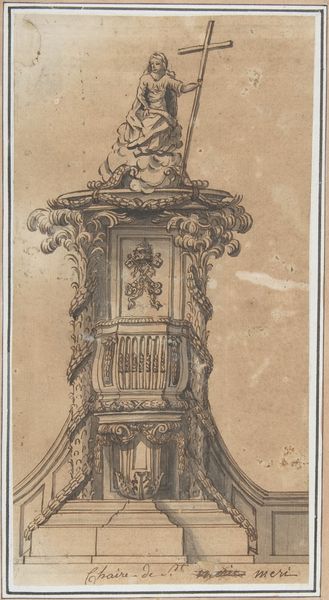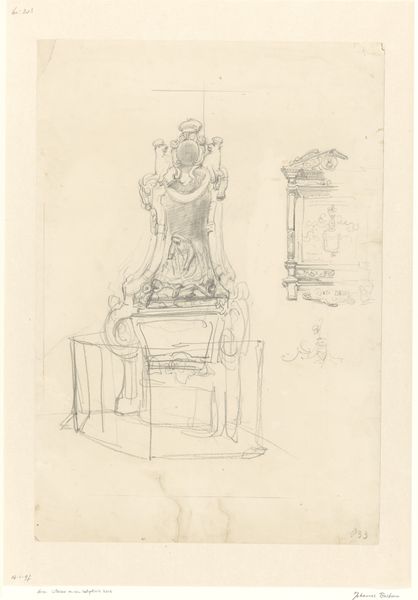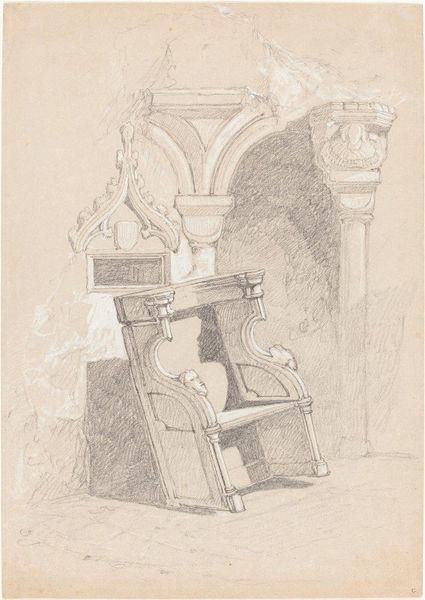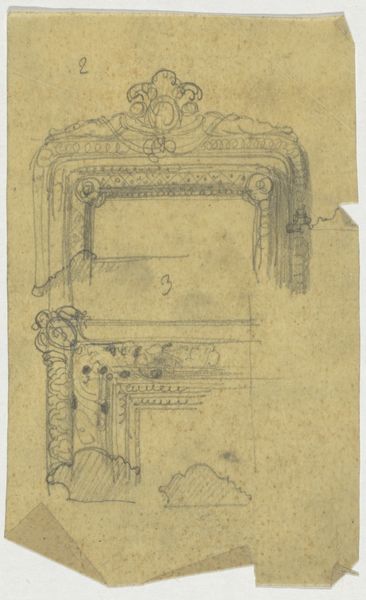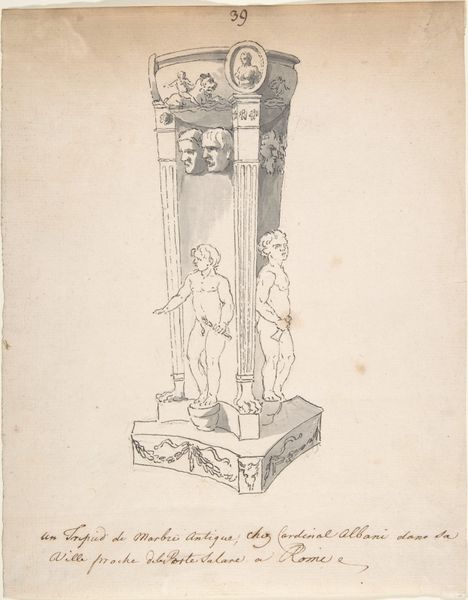
Curved Metal Brackets Supporting a Shelf outside a Window, Isle St. Louis 1875 - 1885
0:00
0:00
drawing, print, pencil, architecture
#
drawing
# print
#
pencil
#
architecture
Dimensions: sheet: 3 1/16 x 2 5/8 in. (7.7 x 6.6 cm)
Copyright: Public Domain
Curator: I’m struck by how ephemeral this image feels; all these lightly sketched curls and brackets hinting at something more permanent. Editor: And it is permanent in a way; this pencil drawing captures a "Curved Metal Bracket Supporting a Shelf outside a Window, Isle St. Louis." It's attributed to Richardson Ellson & Co. and dates to somewhere between 1875 and 1885. Curator: Metalwork transformed into pencil strokes; I wonder what that says about how different media are valued. Is a metal bracket any less crafted than this drawing depicting it? The support's purpose is rendered in a very fragile form, with a sense of disappearing. Editor: Indeed, this piece's symbolism lies in these layers: support structures enabling commerce, but rendered here in an easily-erased medium like pencil on paper. Those scrolling forms almost feel like echoes, and suggest opulence or indulgence. How fascinating that something meant for practical function is rendered with such ornamentation. Curator: I see it in terms of architectural iconography. These curls reference a particular period’s taste, perhaps recalling Louis XIV motifs. Even the act of depicting it lends significance, hinting towards a reverence for the craft. But what purpose do those decorations fulfill for the workers shaping the original material? Did they feel a sense of empowerment as designers or producers? Editor: That's the intriguing social undercurrent—who is producing this beauty, and for whom? I feel a nostalgic sense from the sketch’s quick lines as well. Someone paused and thought this support was something worth recording, though, but it could’ve easily become a photograph rather than a drawing with unique character, suggesting it’s also a material choice meant to last beyond photography. Curator: A fleeting impression captured on paper endures. The drawing invites us to question not just the architecture but our interaction with it, too, as more than functional form. Editor: Perhaps Ellson's original design elevated mundane architectural details into subjects worthy of aesthetic attention. Looking closely, I realize I underestimated its initial presence—quite striking.
Comments
No comments
Be the first to comment and join the conversation on the ultimate creative platform.
